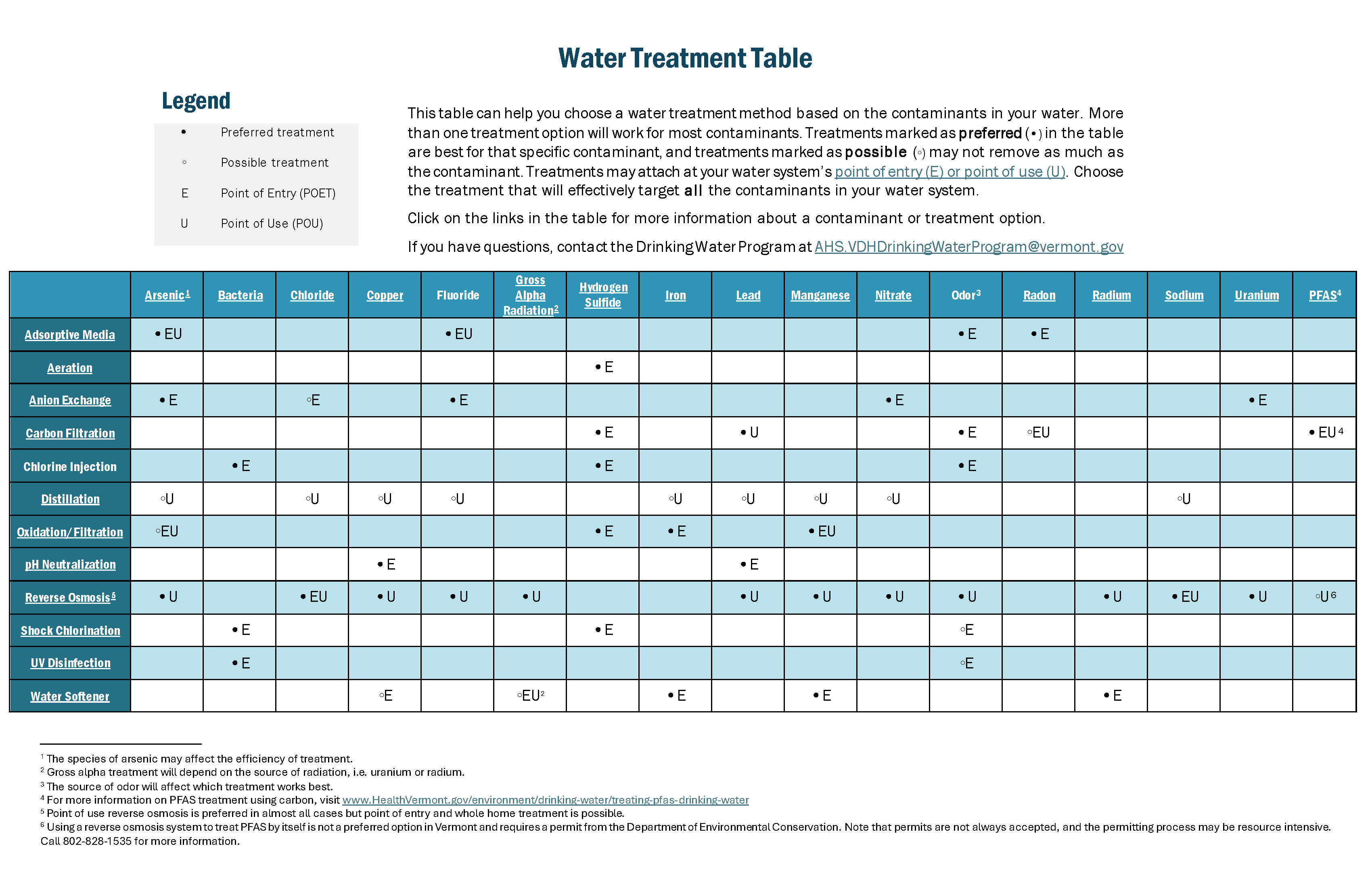Vermont is in a severe drought. If you are out of water and need help finding a safe source, contact your town's emergency management director.
If you use a private well or spring, find out what to do if you think you're running out of water.
Treat your water if it has high levels of contaminants.
If you have high levels of contaminants in your drinking water, the Health Department recommends treating your water. You can install a home water treatment system to lower or remove contaminants for health concerns or for nuisances such as bad taste, odor or color.
What to Do First
Before deciding on a water treatment system for your home, it is important to complete all the recommended drinking water testing. This is because there are many considerations when choosing the best and safest water treatment system. For example, a water softener can be used to treat hardness, iron and radium, but it will not remove arsenic.
Pretreatment is sometimes necessary for some treatment systems. This is because some contaminants (usually hardness, iron or manganese) can make the treatment system less effective at removing the contaminant you want it to.
The Health Department recommends contacting a water treatment specialist to get the most up-to-date treatment information and estimates. It is usually a good idea to get estimates and treatment recommendations from more than one water treatment specialist before you make your decision. Once the system is installed, you will need to maintain it. Be sure to ask for maintenance cost estimates, too.
Treatment System Options
Treatment systems are divided into two categories:
- Point-of-entry treatment (POET) systems are typically installed as water comes into a home and treat all the water in your home.
- Point-of-use (POU) systems are typically installed under or by the kitchen sink and treat only the water used for drinking and cooking.
Below you will find an overview of treatment system options. When selecting a treatment system make sure it is NSF-certified.
It is always important to re-test after any treatment system is installed to ensure it is working properly. If you have already done the recommended testing, you can choose to test only for the contaminant the treatment system was installed for. Find information on water testing

